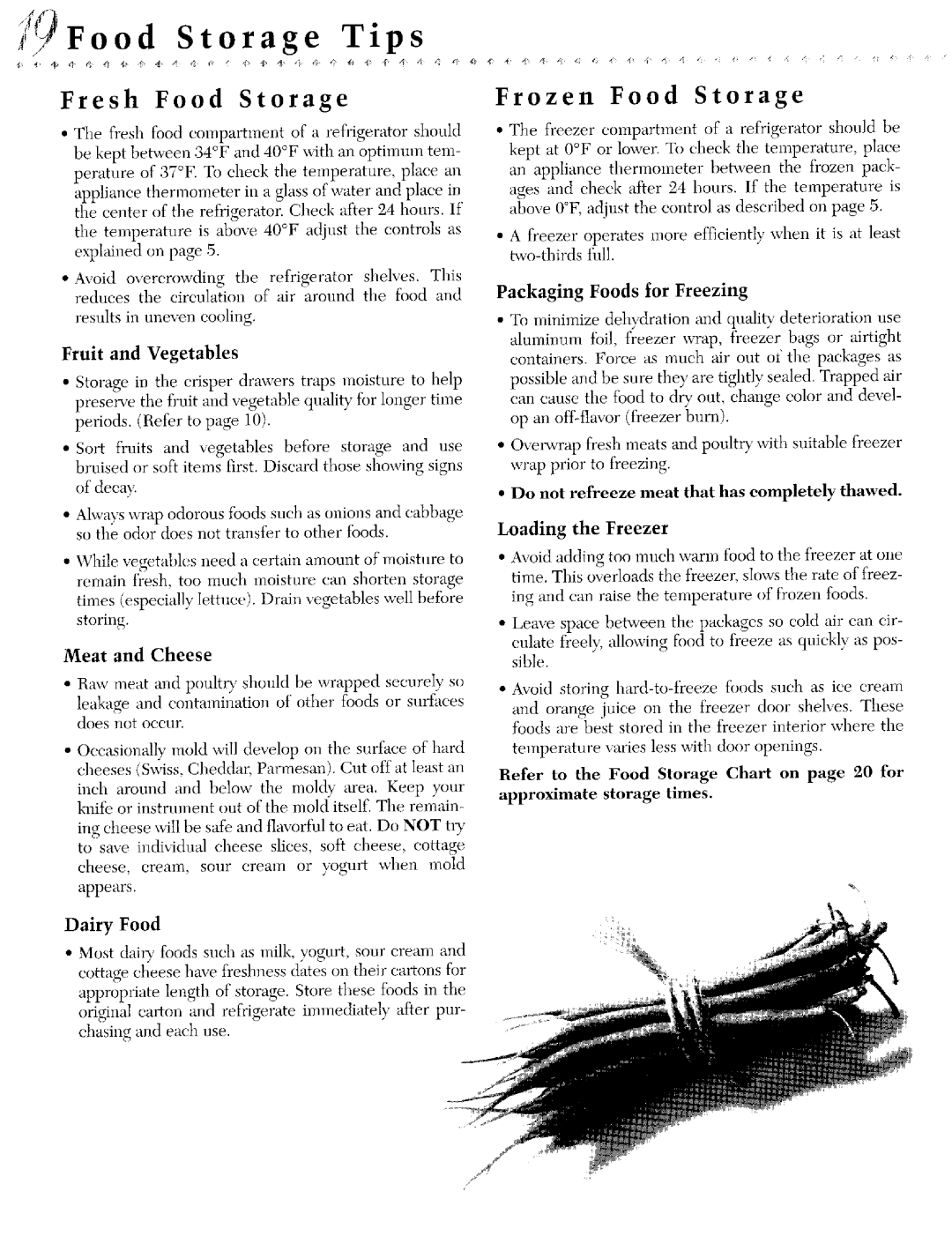JCD2289AEA, JCD2289ATB, JCD2289AEQ, JCD2289AES, JCD2289AEB specifications
Jenn-Air is synonymous with luxury in the realm of kitchen appliances, and its line of refrigerators exemplifies this commitment to quality and performance. The models JCD2289AEQ, JSD2388AEA, JCD2289AES, JCD2289ATW, and JCD2289AEB stand out for their innovative features, advanced technology, and sleek design.One of the hallmark features of these Jenn-Air refrigerators is their innovative dual cooling system. This technology separates the airflow between the refrigerator and freezer compartments, helping to maintain optimal humidity levels and prevent odor transfer. As a result, fruits and vegetables stay fresher for longer, while ice cream retains its creamy texture.
Another prominent feature is the incorporation of an advanced ice maker and water dispenser. Models such as the JSD2388AEA provide a convenient in-door ice and water dispenser, allowing for easy access to chilled beverages without having to open the fridge. This not only enhances convenience but also improves energy efficiency by minimizing cold air loss.
In terms of storage, these refrigerators boast flexible shelving, allowing users to customize their space according to their needs. The adjustable shelves can accommodate various item sizes, making it easier to organize everything from tall bottles to small jars. The spacious crisper drawers also help keep produce crisp and within reach, catering to the needs of health-conscious families.
In addition to functionality, Jenn-Air refrigerators are designed with aesthetic appeal in mind. The sleek stainless steel finish is not only easy to clean but also adds a touch of modern elegance to any kitchen. Models like the JCD2289AEB offer a bold black option that complements a variety of kitchen styles, while the JCD2289ATW presents a classic white finish for a timeless look.
Energy efficiency is another essential aspect of these models. Many of them feature ENERGY STAR ratings, underscoring Jenn-Air’s commitment to sustainability. Consumers can benefit from lower energy bills while also reducing their environmental footprint.
Smart technology is also integrated into these models, with some versions offering Wi-Fi connectivity. This allows users to monitor temperature settings, receive alerts, and even manage grocery lists from their smartphones, providing a seamless connection between technology and kitchen management.
Overall, the Jenn-Air JCD2289AEQ, JSD2388AEA, JCD2289AES, JCD2289ATW, and JCD2289AEB refrigerators encapsulate a blend of luxury, practicality, and cutting-edge technology. Their design, features, and energy efficiency make them a worthwhile investment for any modern kitchen, ensuring that both aesthetics and functionality are achieved.

